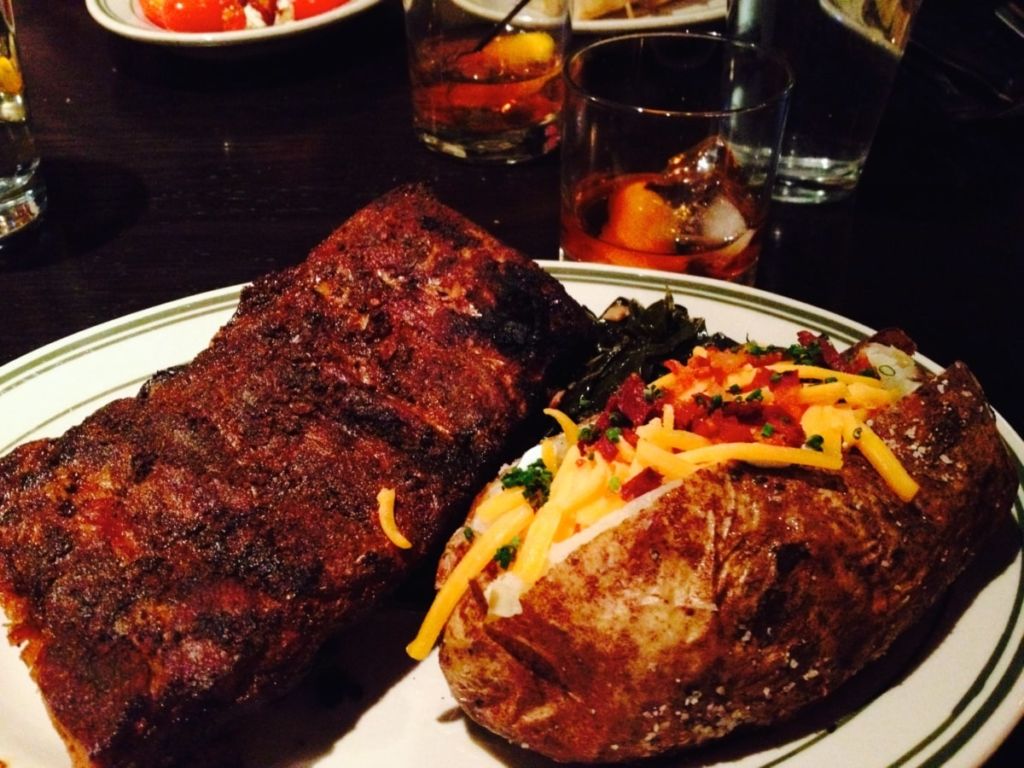12 Ways Bodyweight Training Turns You Into A Ninja
June 9, 2021
Bodyweight training has withstood the test of time (and technology) as one of the best ways to lose fat, build muscle, and optimize your physique.
And while there’s no “best” method, no inherently terrible method, and no perfect tool.
Instead, there are only methods, and sound execution of the method.
From there, the precision in which you master the method drives results. Either you’re a high-performance beast in control of your body, or you’re not.
If you’re like me, barbells, dumbbells, and kettlebells make up the majority of your training.
Still, these are all a means to an end, rather than the end all be all. At the end of the day, what’s important is…
How well you perform in your sport against your opponents.
How much lean muscle you’re building. Or whether that aching shoulder, stiff back, or cranky knee pain is subsiding. Recently, I made a major change— adding bodyweight training.
A lot more if it. The result?
I’m stronger, shredded, and more athletic than I have been in the last year and a half. Even better, I’m healthier with less joint stress and overuse injuries. My clients too. This just touches the surface on the benefits of bodyweight training.
In this post, I’ll show you 12 reasons bodyweight training will get you stronger, shredded, and more athletic. You’ll probably even look better naked, and develop some wicked ninja skills, sans the throwing stars. Enough chit-chat. Let’s get down to business.
1. More Variety for Advanced Trainees
The more advanced your training age, the slower adaptation is.
That’s just the way the cookie crumbles. If basic linear overload worked 100% of the time, we would all be squatting 1000lbs after two years under the bar. Instead of sticking with the same basic squat, bench, deadlift, and power clean workout you did in high school, make changes.
Start adding in single leg progressions, chin-ups, or advanced push-up exercises, like the med-ball pop-up push-up below:
2.Bodyweight training Increases athleticism
Who the hell wants to get crossed over at the YMCA by some pimply-faced teenager? We ain’t got time for that! In most sports, the speed and efficiency in which you move is what determines your success. This includes:
- Juking and sprinting from an opponent in football.
- Jumping off one foot in basketball.
- Driving through your hips, rotating, and delivering a punch to your opponent.
These days, powerlifting and building max strength are the flavors of the month. While absolute strength is important, the most important factors for most athletes remain moving effectively with enough relative strength to move faster than the competition.
Bodyweight training is ideal to build relative strength because each exercise is limited by your ability to move, control, and stabilize your body through space.
Maximum strength is still vital, but incorporating bodyweight movements like sprinting, jumping, skipping, and basic squats and push-ups is vital for athletic performance. Hurdle Hops are one of my go-to bodyweight jump variations:
Rather than fixing you into the same exact movement for the umpteenth time, you’ll reinforce timing, coordination, speed, stability, and mobility while moving your body.
3. Lower Joint Stress
Compound barbell exercises might be the backbone of most good training programs, but too much of a good thing is exactly that: too much. Specifically, excessive loading in the same movement patterns over years is a sure-fire way to wear out your joints, especially if there are technical flaws.
Bodyweight training provides a different mechanical overload while reducing joint stress. I’m not saying drop the big boy lifts, far from it. Instead, incorporate more bodyweight movements like pistol squats instead of squats once or twice per week.
4. Improved Mobility and Stability in Your Big Lifts
Most bodyweight exercises need stability and mobility that is neglected through more popular training methods, like barbells.
Bodyweight exercises recruit often-neglected smaller muscles to fire and stabilize the body the way it was meant to work.
Incorporate bodyweight work for a while and watch your big lifts explode once you’re back under the bar with greater kinesthetic awareness and support.
5. Build More Real World Strength
I’ve had clients come in with 400lb+ bench presses, yet they couldn’t perform a push-up properly. You must be able to control your own body safely and efficiently to be a high-performance beast. The body is great at compensating for underlying weaknesses, especially with the same redundant movement patterns.
Instead of blitzing the barbell again, overload bodyweight exercises. Bodyweight exercises provide simultaneous challenges mobility and stability with the prime movers and stabilizers concurrently firing. The end result is a body that is capable of moving in the real work, not just the platform.
6. Higher Training Volume for muscle growth
When helping clients add muscle mass the first training change I make is adding volume. Rather than hammering extra isolation work, I opt for bodyweight circuits for clients to hit at home before work or school.
This allows a significant increase in training volume without making more trips to the gym. Beyond eating more (which I covered below), add bodyweight circuits once in the morning before heading off out for the day. Don’t half-ass these—make the bodyweight variations tough enough to cause stress and overload.
Related: Nutrition for Hardgainers To quantify the volume let’s say you do 45 push-ups during each workout. In 30 days, that’s an additional 1,350 push-ups in a month. DAYUM. If you did an additional 1,350 push-ups next month, would you be bigger and stronger? Yes. No struggle, no growth.
7. Bodyweight Training Tests Help You Stay Lean While Bulking
We’ve all been there. In the middle of a muscle gaining phase and all a sudden it hits: You feel fat, out of shape, and un-athletic. You’re not alone. Most lifters get so obsessed with adding weight to the scale and blow up with tons of unnecessary fat gain.
The result?
Decreased relative strength.
While getting bigger might appeal to you aesthetically, you’ll ruin your performance if relative strength decreases and you can’t generate force as rapidly and efficiently. To test the issue, my clients test their broad jump, push-up, and chin-up numbers every few weeks when gaining weight. Push-ups, chin-ups, and explosive jump decreasing?
Then your relative strength is dropping and you’re unable to generate force as fast. Push-ups, chin-ups, and explosive jumps staying the same? Bingo! You’re adding lean mass and getting progressively stronger to keep up with your body weight.
8. Control Cheat Days
Listen: We all have cheat days. Beer, pizza, ribs, fries, fruity vodka drinks with cute umbrellas, chocolate-covered bacon….the list goes on for these tasty little morsels.
Eating has social implications—holidays and social events where “unhealthy foods” help you relax and enjoy the company of others are part of our culture. That said, they’re still cheating days and must be limited in order to get jacked and athletic. “Great, so where do bodyweight exercises fit in?”
I’m glad you asked. Due to their convenience, bodyweight exercises are the perfect weapon to increase pre-cheat insulin sensitivity.
Basically, by dropping and crushing 30 push-ups, band pull-aparts, and squats you’re activating your muscles to be receptive to the calorie bombs.
The key? Glute 4, a transporter that handles transporting glucose into the skeletal muscle from the bloodstream, is stimulated by muscular contractions.
That means: yes, it’s possible to limit your fat gain while drinking beer and eating pizza with your buddies. Just keep it in moderation and use mini-workouts 15-30 minutes before and after cheat meals to stay leaner and use the extra calories for building muscle.
9. Your Body Knows Tension, Not Weight
“Wait, what?” Most of my athletes obsess over measurables like the weight on the bar or the distance of a sprint. While these metrics are important, your body doesn’t care what’s on the bar or how far you need to run.
Your mitochondria don’t know the distance you’re sprinting; rather, it knows the intensity and time of the exercise and makes changes based on those demands.
Similarly, your body doesn’t know 400lbs is on the bar for a squat. Instead, it knows it must recruit as many muscle fibers as possible and fire in a synchronized pattern to complete a muscle action against a heavy load.
Instead of the same old lifts, overload advanced bodyweight variations. Try pistol squats, chain push-ups, ring chin-ups, handstand push-ups, and L-sits to maximize muscular tension and build strength beyond the barbell.
10. Bodyweight Training is Fun
It’s easy to lose sight of the primary reasons most of us train—It’s fun and a source of stress relief. Unfortunately, the same methods of training get stale over time and workout quality suffers. Missed workouts, poor focus, and a lack of determination are signs that you need to change up your training.
For starters, go with bodyweight training as a substitute for a major movement pattern. Instead of overloading your bench press for the 104th straight week, take a few months and progress towards a one-arm push-up. Your months of hard work won’t just disappear; rather, you’ll experience a fresh determination and super-compensation from changing your routine.
11. Bodyweight Training is Key for Injury Prevention
Mobility and stability are important parts of any training program. Problem is, most lifters only focus on improving mobility and are a slave to countless drills and soft-tissue devices. While these all have their place, mobility without stability is like building a house without a sound foundation.
Everything looks okay at first, yet a greater range of motion without stability is no better than a limited range of motion. Instead of simply attacking mobility drills and soft tissue work, back them up with a stabilization movement right after.
For example, perform a mobility drill followed up by a 10-15 second isometric contraction to reinforce the new mobility.
Mobility: Thoracic Mobility Drill
Stability: 90-degree Isometric Push-Up Hold
Instead of building a foundation and leaving it alone, build a foundation and reinforce it with concrete stability to maximize injury prevention.
12. Bodyweight Training is More Convenient
The biggest issue most people run into is missing training sessions and inconsistencies. Bodyweight training eliminates the issue and allows you to train anywhere without equipment.
A few pieces of equipment that make bodyweight training convenient at home are the ab wheel and a doorway chin-up. I’ve had dozens of weeks with only one or two lifting days in the gym, yet made progress hitting chin-ups (all angles), ab wheel rollouts, single-leg squats, and push-ups.
Your body knows overload, every piece of equipment is just a tool. Add micro-workouts to your week—you don’t even need to go to the gym.
At the end of the day…
Bodyweight training keeps you athletic, lean, healthy, and creative in my training. Even when you love crushing big weights as your primary mode of training you’ll benefit from replacing some barbell and dumbbell lifts with bodyweight training. The benefits go beyond reduced joint stress.
You’ll improve your mobility, attack weak points, and stimulate stagnant growth from muscle fibers you’ve been neglecting.
You need to stay healthy and move your body well through space– bodyweight training helps you do just that.
Train Smarter, Train Harder, Perform Better
Building a high-performance body can be difficult. But, it doesn’t have to be.
Let me simplify the process for you with over one year worth of workouts, fat-shredding meal, plans, and a private coaching community. Start your transformation today by heading here.










[…] 12 Ways Bodyweight Training You Into A Ninja — Eric Bach, T-Nation […]
[…] 12 Ways Bodyweight Training Turns You Into A High Performance Ninja […]
[…] article! Check it out for 12 […]